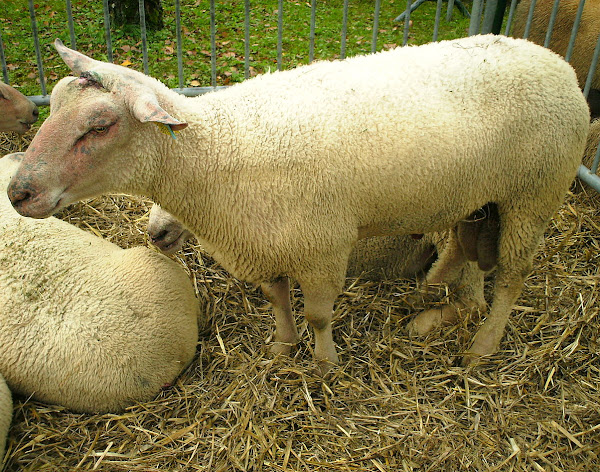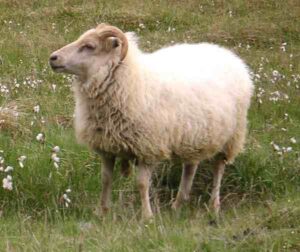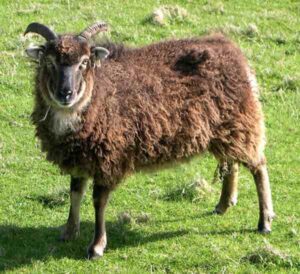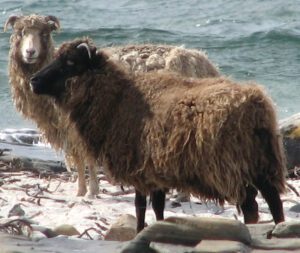The Charollais sheep is a breed of domestic sheep from France. It was originated from the east central part of the country (Charolles and Saône-et-Loire), the same region in which the Charollais cattle developed.
The breed was developed in the early 1800s. And was developed from a cross between Leicester Longwool with local land-race sheep breeds.
The Charollais sheep breed is used mainly as a terminal sire for increasing the muscling and growth rate of the lambs. The rams generally reach maturity within their 7-8 months of age.
And the Charollais rams are the second most used terminal sire breeds in United Kingdom.
The Charollais sheep has been exported internationally, and today it is found in many different countries throughout the world. Read some more information about this sheep breed below.
Charollais Sheep Characteristics
The Charollais sheep are a large sized breed of domestic sheep. They are generally white in color with a pinkish-brown head. Their head is generally free of wool, but may have a fine covering pale colored hair.
Body of the Charollais sheep is long in the back, wedge shaped and well-muscled. They are also fine boned animals, good for a high meat percentage.
Legs of these animals are brown, quite short and usually free of wool. Both rams and ewes are generally polled. Average live body weight of the mature Charollais rams is about 135 kg. And average live body weight of the mature ewes is around 90 kg.[1]

Uses
The Charollais sheep is a meat sheep breed. It is raised mainly for meat production.
Special Notes
The Charollais sheep are hardy animals and they are well adapted to their native climates. They also do well in some other parts of the world.
Today the breed is raised mainly for meat production. But also good for producing wool. Their fleece generally weights between 2 and 2.5 kg.
The fleece has a staple length of 1.6 to 2.4 inches. The wool is of fine quality and measures 56 to 60 on the Bradford count, with a fiber diameter of 29 to 30.5 microns.
The Charollais ewes are very prolific and they have a long breeding season. Average lambing in December is around 180 percent, and reach about 200 percent in February.
The ease of lambing means minimal stress to both the ewe and lamb and a vigorous lamb keen to suck. The ewe lambs can be bred at around 7 months of age, and the lambs generally grow rapidly.
However, review full breed profile of the Charollais sheep the chart below.
| Breed Name | Charollais |
| Other Names | None |
| Breed Purpose | Mainly meat |
| Special Notes | Very hardy animals, well adapted to their native climates, today raised mainly for meat production, also good for producing quality wool, ewes are highly prolific and have long breeding season, lambs grow rapidly |
| Breed Size | Large |
| Weight | Mature ram’s average live body weight is around 135 90 kg, and the mature ewe’s average live body weight is around 90 kg |
| Horns | No |
| Climate Tolerance | Native climates |
| Color | Generally white |
| Rarity | Common |
| Country/Place of Origin | France |







Massive thanks! 🎉